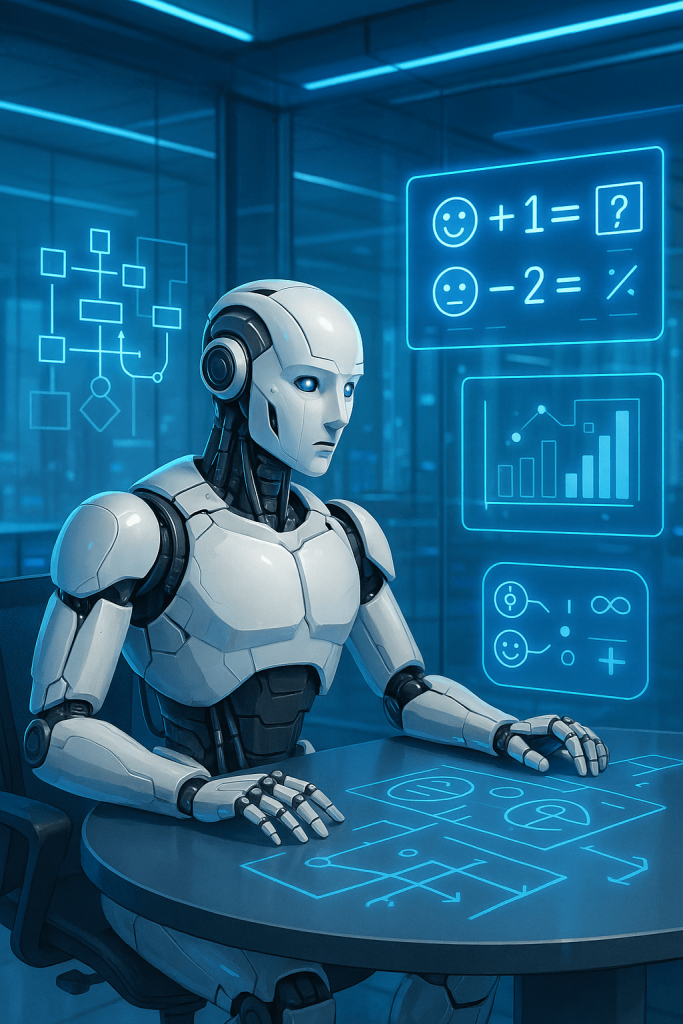The early days of AI automation were all about executing simple tasks: schedule this, write that, calculate this. But by 2025, we’ve crossed a critical threshold—from tools that follow instructions to agents that think, decide, and act with minimal human intervention.
The evolution of AI automation
Level 1 (2020–2022): Task automation. Single actions by single tools.
Level 2 (2022–2024): Workflow automation. Anticipated sequences of actions.
Level 3 (2024–2026): Decision automation. AI that makes decisions based on context and goals.
As explained in “Automate or Stagnate”, the best leverage comes from systems that can think—not just act. That’s where AI agents come in.
What exactly are AI agents?
An AI agent is a software entity that:
-
Has goals
Unlike basic automation that executes fixed instructions, an agent understands goals and works toward achieving them. Example: “Maintain our blog’s publishing schedule while optimizing engagement” rather than “Publish this post at 9 AM.”
-
Makes decisions
Agents evaluate options and choose the best strategy based on their understanding of your goals. Example: determining which leads deserve immediate follow-up or retention campaigns based on behavioral models.
-
Learns and adapts
Agents improve their decision-making over time through feedback and outcomes. Example: a content optimization agent fine-tunes its strategy based on the topics and formats that generate the most engagement.
-
Takes initiative
Advanced agents identify opportunities and issues without being prompted. Example: a financial agent that detects unusual spending patterns and suggests corrective actions.
The difference between level 2 and level 3 automation is like the difference between an assistant who follows your instructions precisely and one who understands your goals and makes good decisions even when you’re unavailable to guide them.
Real-world applications of AI agents
Content Operations
Old method: Human validation of every piece of content at every stage.
Agent method: An AI that:
-
Generates content based on performance data and scheduling
-
Makes editorial decisions on topics and formats
-
Determines optimal distribution channels and timing
-
Flags only unusual situations for human review
Discover how to implement this with AutoGPT.
Customer Support
Old method: Tiered human support with basic chatbots for FAQs.
Agent method: An ecosystem of agents that:
-
Categorizes incoming issues by complexity and sentiment
-
Resolves 70–80% of problems without human intervention
-
Identifies systemic issues and generates reports
-
Decides when to escalate to human specialists
Implementations of this are described in our CrewAI guide.
Sales and Lead Qualification
Old method: Sales reps manually review and qualify each lead.
Agent method: A qualification agent that:
-
Analyzes lead behavior across multiple touchpoints
-
Conducts initial outreach conversations to assess interest
-
Decides whether to pursue or drop the lead
-
Adapts qualification criteria based on conversion data
This approach is supported by the tools covered in Top AI Automation Tools.
Build your first agent-based workflow
-
Define the decision domain
Start with a clearly scoped area where decisions follow consistent patterns but still require judgment. Example: email triage or content approval. -
Create the decision framework
Document how experts currently make these decisions. What factors do they consider? What thresholds trigger different actions? What exceptions exist? -
Select your agent technology
Choose from platforms like AutoGPT, Taskade AI, or CrewAI based on complexity and integration needs. -
Build the monitoring system
Agents need supervision. Create dashboards that show agent decisions and outcomes—especially during the learning phase. -
Implement feedback loop design
Allow humans to override agent decisions and feed that data back into the system to improve future performance.
Start small but think big
Begin with a narrow decision domain where suboptimal outcomes are manageable. As your agents prove reliable, gradually expand their autonomy and scope.
For a full strategy to design your automation ecosystem, check out “Design Your Personal AI Operating System.”
Multi-agent systems: the future of work
Specialized roles
Instead of one general-purpose agent, create specialized ones for research, writing, data analysis, customer interaction, and more.
Collaborative intelligence
Agents communicate with each other, passing information and requests between specialized capabilities.
Human-in-the-loop design
Strategic points where human intervention corrects course or adds creative direction.
This approach is illustrated by CrewAI, which lets you design AI teams with complementary capabilities.
Ethical considerations in decision automation
Transparency
Can you explain how and why your agents make decisions? Keep logs of decision factors.
Bias monitoring
Regularly check agent decisions for patterns that may indicate data or algorithmic bias.
Human relationships
Be mindful of when to disclose that an interaction is with an AI. Transparency is sometimes essential.
Oversight protocols
Set clear accountability lines for agent actions and decisions. Someone must always be responsible.
Decision automation represents the highest level in the automation hierarchy described in “Automate or Stagnate.”
It’s not for beginners—but it’s the strongest leverage point for those ready to go beyond basic automation.
To find the right tools for your automation journey, explore our complete AI Automation Tools Guide.
Ready to build your own ecosystem of intelligent agents?
Design your personal AI OS and learn how to build a cohesive system from the ground up.

